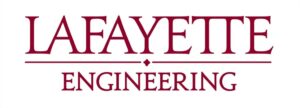Dr. John Grant was a useful asset during the ideation and development of our prototype. The team had an initial meeting with him in order to discuss our problem during the alpha phase. This discussion largely shaped our prototyping phase. Once Dune and Oasis were conceptualized and modeled, we met with Dr. Grant again to update him on our progress. He strongly urged the group to move forward with the 2-in-1 guide, as it would be most useful in the operating room and would more reliably ensure tunnel conflict avoidance.


When describing our stand-alone device, Oasis, Dr. Grant explained that it would not be conducive to accurate results, as clamping onto the skin would cause issues with variability. If we were to move forward with this device, the device would need to be clamped down on landmarks, which would cause two extra drilling tunnels on the top and bottom of the thigh. Dr. Grant informed us that the two-in-one device idea was a much better solution, as the hole for the ALLR is usually created during the same surgery for the ACLR.
Dr. Grant also provided us with feedback that was useful for the testing team. He suggested that we use an anatomically correct femur model when testing the device. This way we could use anatomical landmarks to help influence our design and improve our testing procedure.
Another form of stakeholder review came from the two design reviews that took place for the alpha and beta prototype. During this design review, professors from the engineering department were able to sit in and provide us feedback on our device. For the alpha prototype design review, feedback included:
- Feasibility of machining certain parts
- Costs of materials
- Including a failsafe mechanism
- Drilling angle instability
For the beta prototype design review, we found:
- Machining the parts would add a level of credibility to our design
- Rework the T-tube
- Elongate the T-tube
